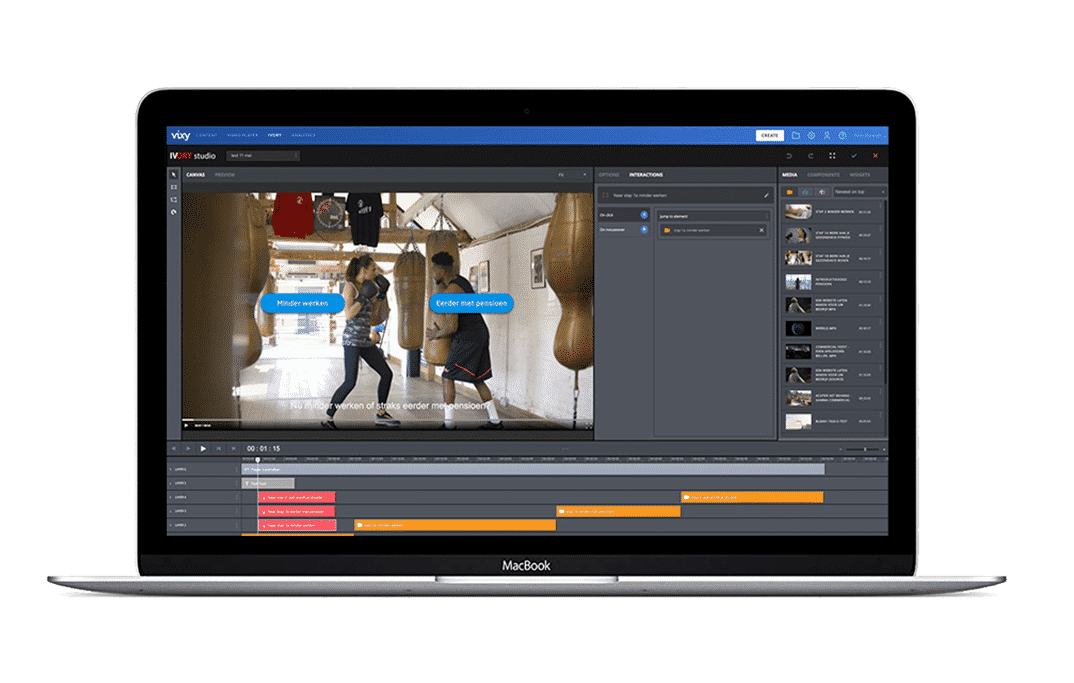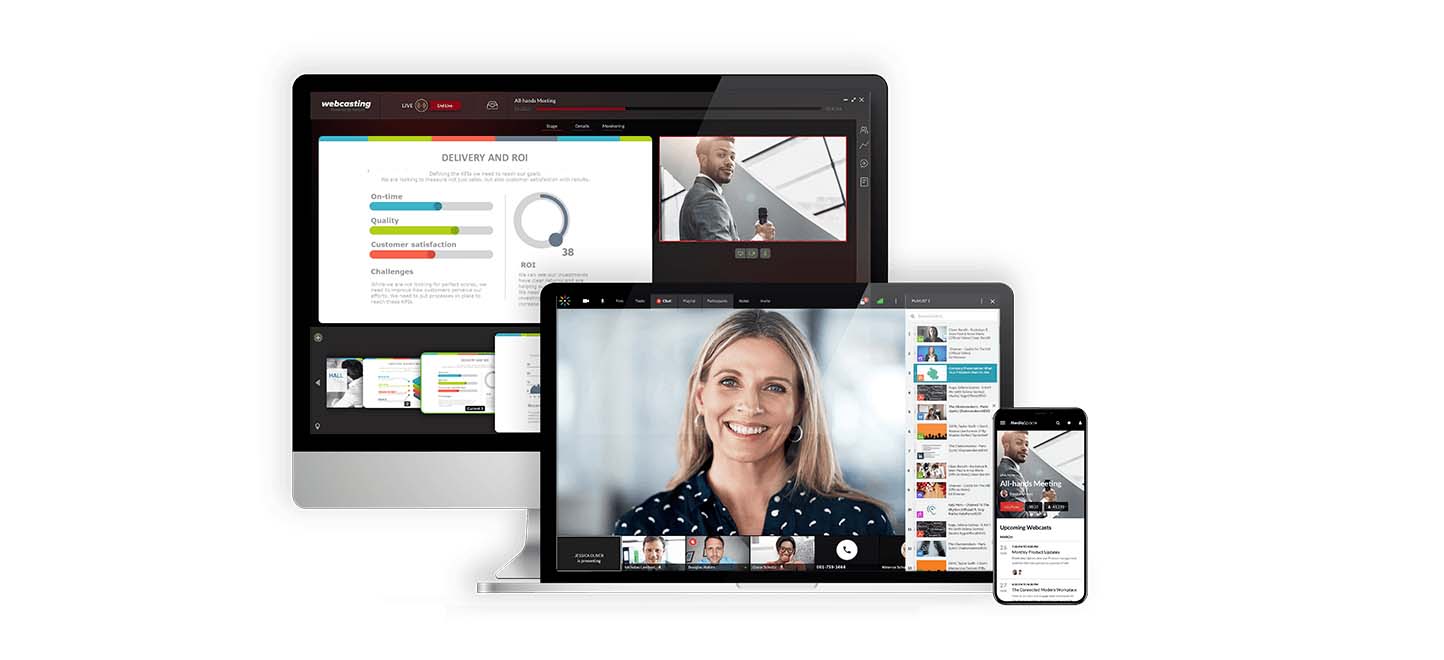When to consider your own in-house production studio?..

When you entering the world of interactive video, there are some things to consider: how do you make sure you don’t forget anything? How do you achieve your goal? How do you make an interactive video? In this blog, we’ll take you through the six stages we go through in creating effective interactive videos.
When you entering the world of interactive video, there are some things to consider: how do you make sure you don’t forget anything? How do you achieve your goal? How do you make an interactive video? In this blog, we’ll take you through the six stages we go through in creating effective interactive videos.
Before we focus on the steps in the process, let’s zoom out for a bit. Why would you make an interactive video in the first place? Unlike linear video, a video with an interactive structure facilitates an active form of video consumption rather than a passive form. Therefore, an interactive video is an ideal tool for grabbing attention, captivating your target group, and increasing conversion. Cisco’s Visual Networking Index Forecast states that by 2021, 80% of internet traffic will be dominated by videos. By thinking out of the box you can let your brand standout from that huge number and catch the attention of your viewers. Can you explore interactive videos trends in an area where they have not been used previously, for your brand? Will that gets people talking about your brand?
The great thing about an interactive video is that you can make all clickable elements measurable. With using an interactive video player, you get access to an Online Video Platform (OVP). This allows you to manage everything related to the interactive video and gives you access to very complete engagement analytics. The analytics provide in-depth insight into the number of views and unique viewers, the average viewing duration, the moment at which people are clicking away, and the conversion rate. This data is extremely valuable – not only to demonstrate the impact of the video but also to further optimize the video and the interactive flow. To get to that point, you must first go through the following steps.
Adding interactivity is easy with our interactive video software.
In the concepting phase, it is important to first determine your goals, to discuss the message you want to convey, and to determine your KPIs.
Questions you should ask:
Are you a pharmaceutical organization? Then you might want to educate 10.000 patients based on stories of experience and treatment methods with an information video, where the story that is shown is based on the viewer’s choice of medicine.
Perhaps you want to recruit new students through tailor-made information via e-learning videos, or maybe you want to create a reduction in customer service in the number of phone calls as a service organization. This can be done by answering the most common questions in an instructional video. This allows users to walk step-by-step through the viewing routes and receive answers to frequently asked questions. Research shows that interactive video leads to an average call reduction of 20 percent. As you can see, a simple calculation shows that creating and using interactive video pays for itself.
Another example. You have a fashion agency and you want to promote your new clothing line with a product video. You can have interactive elements appear at the right time, such as a frame around a certain dress so that users can purchase the product directly via the video. Interactive videos are also ideal for employer branding and recruiting videos, where candidates can apply directly in the video.
Finally, you can use interactive video for lead generation. For example, many of our customers have added a contact form to their company video, which viewers can use to make a request directly while watching the video.
As becomes apparent, you can come up with countless applications where interactive video makes a measurable contribution to achieving your goals. See also the example of Binck below where customers learn more about turbos step by step.
In this second phase, we get started with content flows and the storyline within your video. This outlines how the video is structured. You start with an introduction or a teaser and then you go more into the content, until users can make their own choices. Then you will work out a separate storyline for each moment of choice. In doing so, you take the viewer step by step towards an outcome that is relevant to him or her. There can be different goals in such a content flow. In this phase, you do not only think about the layout of the videos but also about the content.
Now it is time to film and develop the various videos! These can be real film recordings or animations. Any technique can be used for this; your choice depends on your goal and what suits your organization and target group.
In this phase, the assembly and layout of the interactive flow takes place. Different video fragments are created that belong to the content flow. From video A, you bring the viewer (depending on his or her choice) to video B, C, or D. Video B then refers to different videos than video D, for example. The entire flow is then decorated with the right design and the interactive layers. For example, buttons, menus and contact forms are made as a call-to-action. All this is created in the corporate identity of your company and in a user-friendly interface. This is a complex process that ultimately leads to a complete video platform in one video, which is a dynamic video in which the interactive overlays are incorporated.

To achieve the goal you set in phase 1, the video must be distributed online. Trigger and encourage the target group to visit your website and watch the interactive video. This can be done via an (online) campaign or externally and among your potential customers as well as internally among your employees. Specific topics are also shared on social media.
Of course, it is important to continuously evaluate and adjust based on all the data: which viewing routes are the most relevant? On which questions in the video do people click the most? You can also do A/B tests to find out what works better. Based on those results, you can then adjust your distribution and campaign or improve your interactive flow
Do you want to start with interactive video, just like Binck, ING, NPO, PostNL, Samsung, and Vandebron? Adding interactivity is easy with our interactive video software. Contact us on +3120-2600060 or download our interactive video brochure via the link below.
Interactive video can be used for many purposes, below few examples:
With interactive video you ensure a direct impact on your results, below are a number of advantages:



